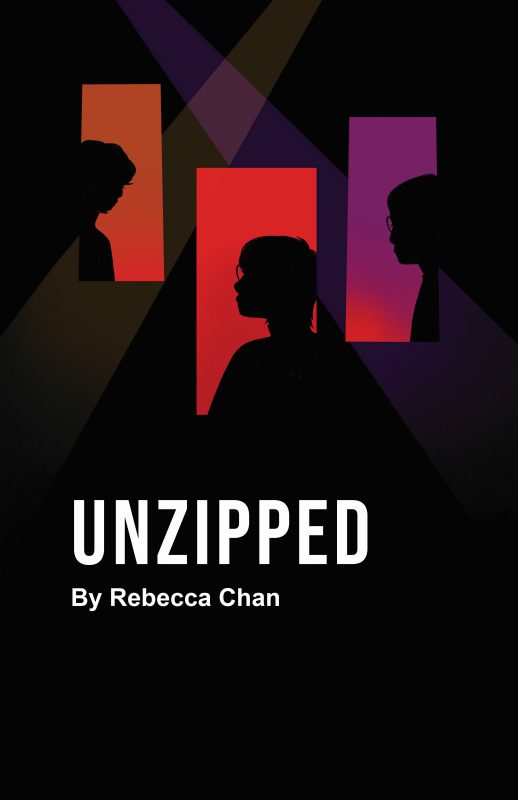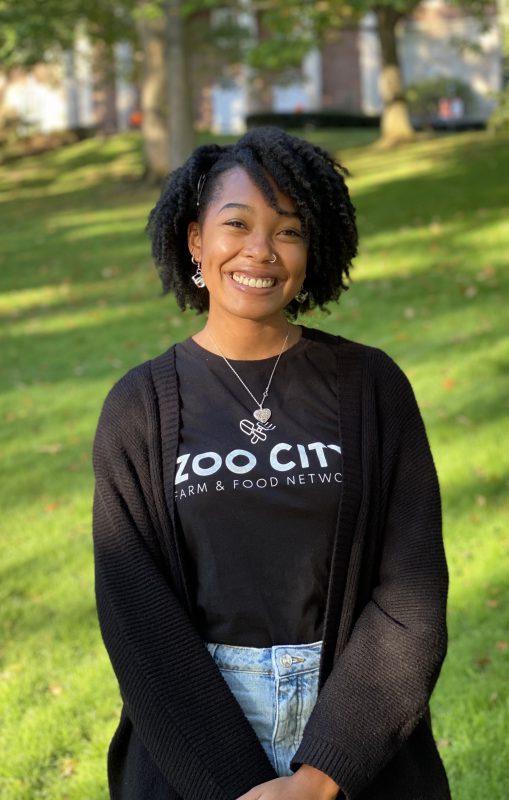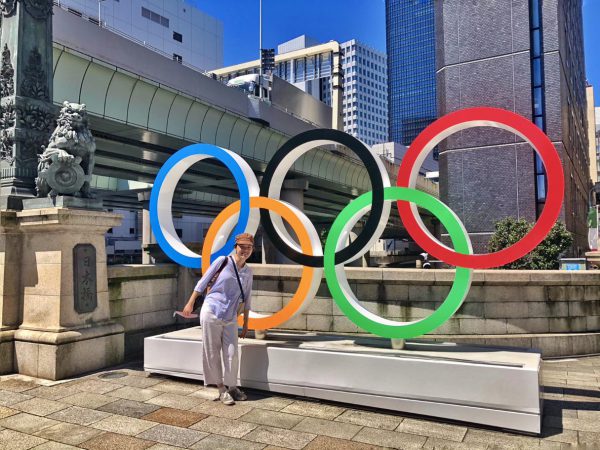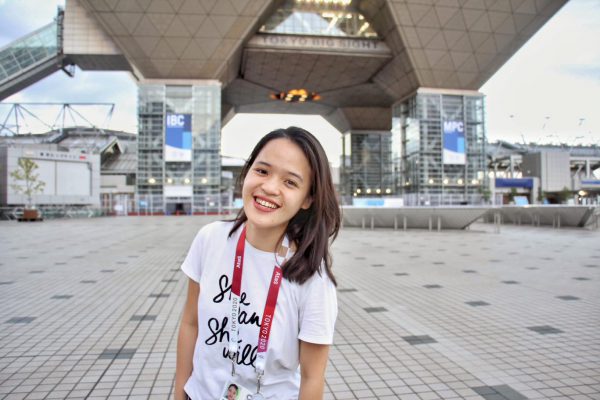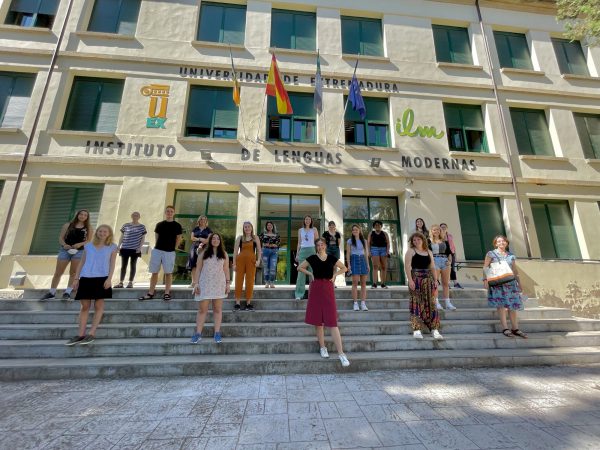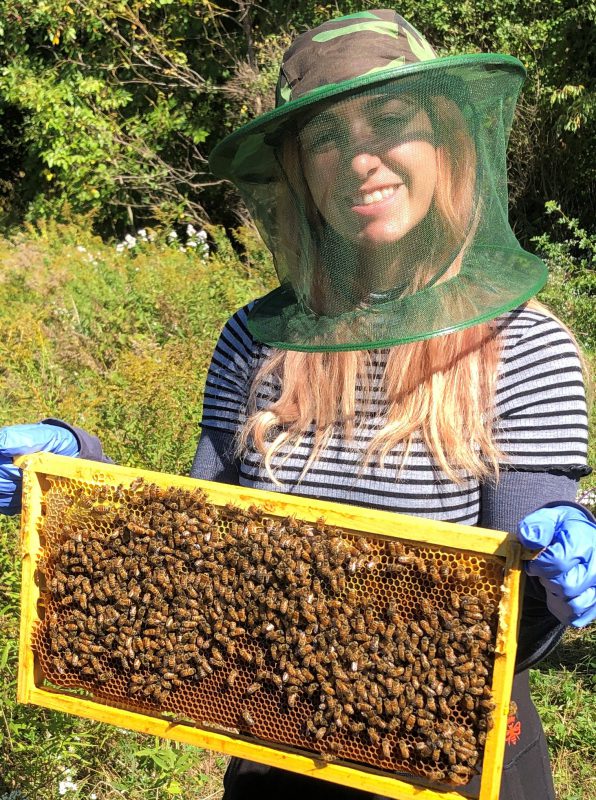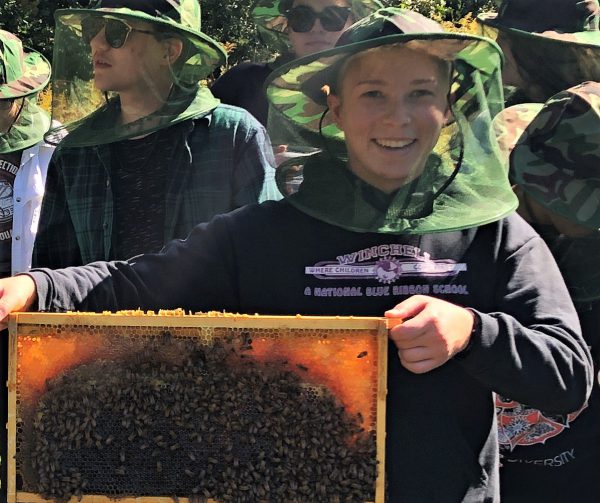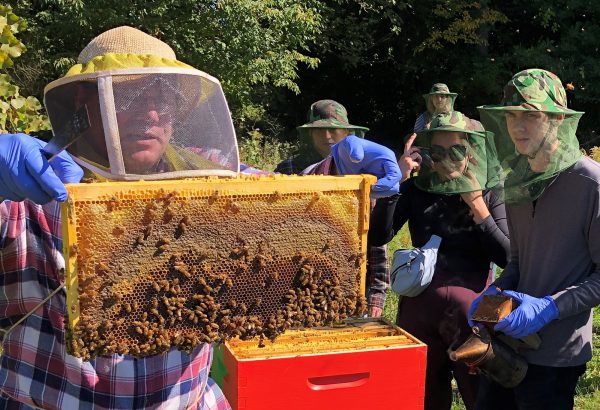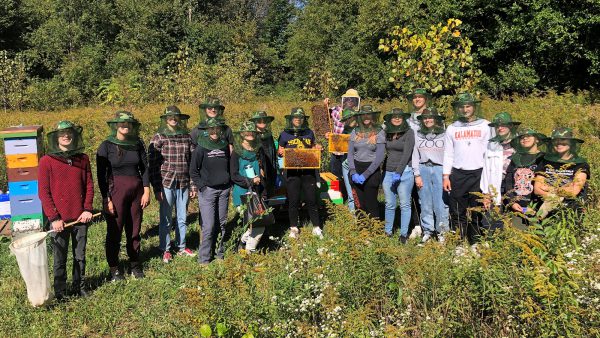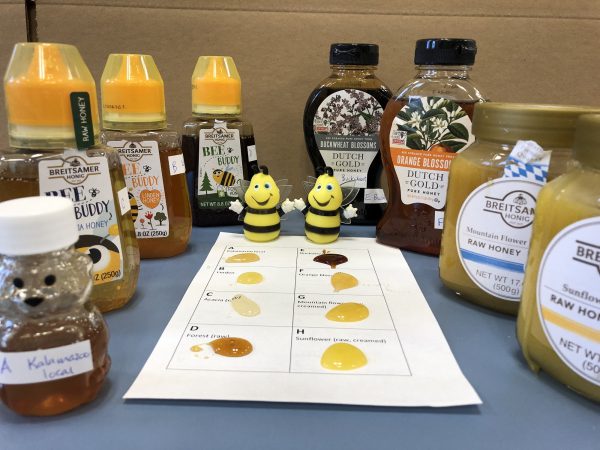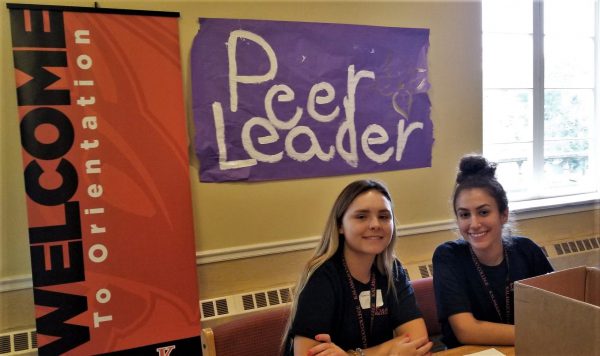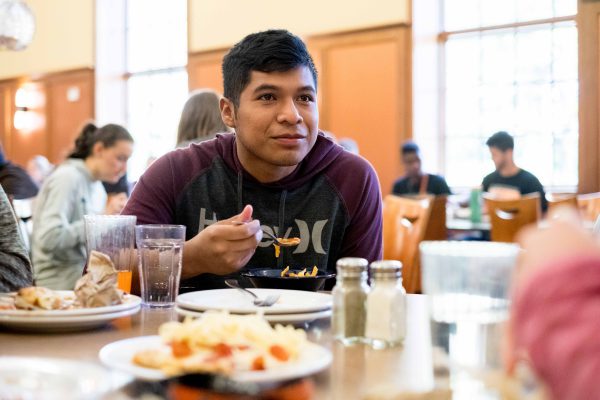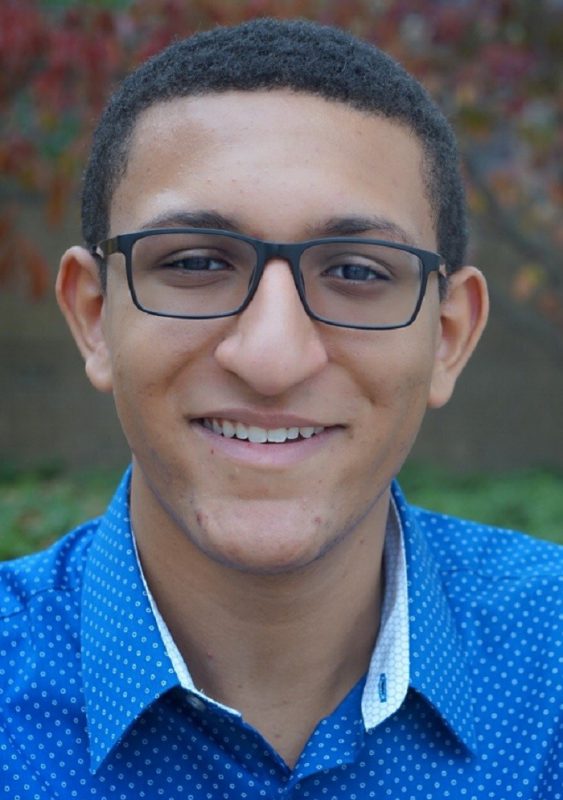More than 300 students were recognized Friday during the annual Honors Day Convocation for excellence in academics and leadership. Students were recognized in six divisions: Fine Arts, Modern and Classical Languages and Literatures, Humanities, Natural Sciences and Mathematics, Social Sciences, and Physical Education. Recipients of prestigious scholarships were recognized, as were members of national honor societies and students who received special Kalamazoo College awards. Student athletes and teams who won Michigan Intercollegiate Athletic Association awards also were honored. The students receiving Honors Day awards or recognition are listed below.
FINE ARTS DIVISION
Brian Gougeon Prize in Art
Julia Holt
Ana Garcia
Ileana Oeschger
Julia Degazio
The Margaret Upton Prize in Music
Lindsey Baker
Cooper Award
Matthew Swarthout
Theatre Arts First-Year Student Award
Sam Ewald
MODERN AND CLASSICAL LANGUAGES AND LITERATURES
LeGrand Copley Prize in French
Ella J. Kelly
Claire McCall
Hardy Fuchs Award
Teresa Lucas
Julia Bienstock
Margo Light Award
Kelley Akerley
Abby Barnum
Department of Spanish Language and Literatures Prize
Madison Walther
Maria Kasperek
Clara H. Buckley Prize for Excellence in Latin
Emma Van Houten
Aliza Garcia
Provost’s Prize in Classics
Isabella Luke
Elle Ragan
Classics Departmental Prize in Greek
Garrett Hanson
HUMANITIES DIVISION
O. M. Allen Prize in English
Claire McCall
John B. Wickstrom Prize in History
Jacob Roubein
Meghan Best
Department of Philosophy Prize
Drake Butcher
Louise Colin-Sloman
Nikolas Krupka
L.J. and Eva (“Gibbie”) Hemmes Memorial Prize in Philosophy
Anna Budnick
Jessalyn Vrieland
Caleb Mitchel-Ward
NATURAL SCIENCES AND MATHEMATICS DIVISION
Department of Chemistry Prize
Ifeoma P. Uwaje
Nikhil M. Gandikota
Steven A. Shelton
First-Year Chemistry Award
Ann Marie Johnston
Jordyn A. Wilson
Jessica S. Dant
Lemuel F. Smith Award
Faith A. Flinkingshelt
Computer Science Prize
Sara Elfring
Shahriar Akhavan Tafti
Jackson Kiino-Terburg
First-Year Mathematics Award
Xavier Silva
Indigo Corvidae
Thomas O. Walton Prize in Mathematics
Mallory Dolorfino
Cooper Prize in Physics
Jonah Beurkens
Matthew Nelson
NSF S-STEM PRIME Scholars Program
Leslie Bowen
Alexander Perry
Christine Burton
Emily Rojas
Isabella Cross
Angel Ruiz
Grace Leahey
Lilibeth Uribe
Elijah Mobley
Sancera Williams
SOCIAL SCIENCES DIVISION
Departmental Prize in Anthropology and Sociology
Marquisha James
Alexandra P. Noel
Jane Bentley
C. Wallace Lawrence Prize in Economics
Zoe Gurney
Carolina Guzman
Samantha Moss
William G. Howard Memorial Prize
Mihail Naskovski
Emily Tenniswood
Tristan Fuller
Jenna Paterob
C. Wallace Lawrence Prize in Business
Aleksandr Molchagin
Irene and S. Kyle Morris Prize
Andreas Fathalla
Blagoja Naskovski
Department of Psychology First-Year Student Prize
Leah Ramirez
Sophia Haas
Anna Budnick
Ryan Drew
PHYSICAL EDUCATION DIVISION
Division of Physical Education Prize
Jacob ZellerKelsey Diekman
Maggie Wardle Prize
Savera Rajendra-Nicolucci
COLLEGE AWARDS
Gordon Beaumont Memorial Award
Mackenzy Maddock
Mihail Naskovski
Henry and Inez Brown Prize
Ella Palacios
Abby Stewart
Virginia Hinkelman Memorial Award
Reyna Rodriguez
HEYL SCHOLARS
Class of 2025
Ava Apolo
Anna Buck
Elizabeth Grooten
Alexander Kish
Cole Koryto
Margaret Lekan
Emerson Wesselhoff
Laurel Wolfe
POSSE SCHOLARS
Class of 2025
Clarke Austin
Sekai Beard
Micah Dailey-White
Jalen Iereneo
Kiana Kanegawa
Gionna Magdaleno
Allan Martinez
Deanna Miranda
Leslie Santos
NATIONAL MERIT SCHOLARS
Class of 2025
George Weber
VOYNOVICH SCHOLARS
Addissyn House (Religion)
Elisabeth Kuras (Science)
DAVIS UNITED WORLD COLLEGE SCHOLARS
Ashhad Abdullah
Benjamin Buyck
Silvia Gaete Lagos
Amalia Kaerezi
Mphumelelo Khaba
Akinyi Okero
ALPHA LAMBDA DELTA
Alpha Lambda Delta is a national honor society that recognizes excellence in academic achievement during the first college year. To be eligible for membership, students must earn a cumulative GPA of at least 3.5 and be in the top 20% of their class during the first year. The Kalamazoo College chapter was installed on March 5, 1942.
Kelley L Akerley
Shahriar Akhavan Tafti
Sam Ewald
Andreas Nile Fathalla
Sophia E. Haas
Julia Holt
Sharon Renai Huang
Madelaine Hurley
Carolyn Kate Ingram
Ann Marie Johnston
Jackson Kiino-Terburg
Molly Kohl
Margaret LaFramboise
Mengzhuo (Leo) Liu
Anna Murphy
Blagoja Naskovski
Elizabeth Nestle
Megan Ploucha
Steven Anthony Shelton
Xavier William Silva
Allison Sokacz
Erin Somsel
Ella Szczublewski
Danielle Treyger
Ifeoma Uwaje
Megan Grace Walczak
Madison Elisabeth Walther
Hannah Willit
Claire de Vries
ENLIGHTENED LEADERSHIP AWARDS
Performing Arts: Music
Mabel Bowdle
Grace Park
Laura DeVilbiss
Addison Peter
Sierra Hieshetter
Elena Pulliam
Joseph Horsfield
Maxwell Rhames
Amelia Johnson
Kaytin Waddell
Liam McElroy
McKenna Wasmer
Leo McGreevy
George Weber
Aiden Morgan
Alexa Wonacott
MIAA AWARDS
These teams earned the 2020-2021 MIAA Team GPA Award for achieving a 3.3000 or better grade point average for the entire academic year:
Men’s Baseball
Women’s Golf
Men’s Swimming and Diving
Women’s Lacrosse
Men’s Soccer
Women’s Soccer
Football
Volleyball
Men’s Golf
Women’s Cross Country
Men’s Lacrosse
Women’s Tennis
Women’s Swimming and Diving
MIAA ACADEMIC HONOR ROLL
Student Athletes 2020-2021
Max Ambs
Julia Bachmann
Annalise Bailey
Spencer Baldwin
Madison Barch
Travis Barclay
Hunter Bates
Lillian Baumann
Blake Bean
Ella Black
Rose Bogard
Nikola Bogoevich
Lukas Bolton
Luke Bormann
Alex Bowden
Holly Bowling
Austin Bresnahan
Jack Brockhaus
Jamison Brown
Pierce Burke
Jacob Chantres
Ben Chosid
Walker Chung
Isabelle Clark
Madeleine Coffman
Nicholas Cohee
Zachary Colburn
Thomas Cook
Noah Coplan
Chase Coselman
Joe Coyne
Emma Curcuru
Nicholas Dailey
Gwendolyn Davis
Emmelyn DeConinck
Sarah Densham
Olivia DePauli
Kelsey Diekman
Ryan Drew
Alexander Dubin
Matthew Dubin
Austin Duff
Alex Dupree
Hannah Durant
Gina Dvorin
Bradley Ekonen
Sara English
Jake Fales
Jazmyne Fannings
Colton Farley
Taylor Ferguson
Peter Fitzgerald
Payton Fleming
Matthew Ford
Rachael Gallap
Aliza Garcia
Brynna Garden
Brendan Gausselin
Farah Ghazal
Katie Gierlach
Aidan Gillig
Madison Goodman
Max Gordon
Matthew Gu
Garrett Guglielmetti
Emily Haigh
Rebekah Halley
Ryan Hanifan
Lucy Hart
Hannah Heeren
McKenna Hepler
Sam Hoag
Matthew Howrey
Joy Hunziker
Madelaine Hurley
Nicholas Jackson
Taylor Jackson
John Jesko
Casey Johnson
Jackson Jones
Amani Karim
Lucas Kastran
Ben Keith
Will Keller
Ella Kelly
Blake Kelsey
Hunter Kiesling
Meghan Killmaster
Dahwi Kim
Kaylee Kipfmueller
Allison Klinger
Ella Knight
Matthew Kralick
Brandon Kramer
Benjamin Krebs
Juanita Ledesma
Jack Loveland
Samantha Luzadre
Rachel Madar
MacKenzy Maddock
Keelin McManus
Nathan Micallef
Camille Misra
Ryan Morgan
Anna Murphy
Alexis Nesbitt
Dustin Noble
Jacob Nugent
Alina Offerman
Larkin O’Gorman
Abigail O’Keefe
Jake Osen
Ella Palacios
Helen Pelak
Calder Pellerin
Erin Perkins
Scott Peters
Alexis Petty
Parker Pickell
Sydney Pickell
Megan Ploucha
Harrison Poeszat
Doug Propson
Savera Rajendra-Nicolucci
Jordan Reichenbach
Mya Richter
Ashley Rill
Molly Roberts
Katherine Rock
Lily Rogowski
Alec Rosenbaum
Elizabeth Rottenberk
Jacob Roubein
Tyler Sakalys-Moore
Marco Savone
Justin Schodowski
Hannah Schurman
Darby Scott
Mae Scott
Steven Shelton
Cassidy Short
Jack Smith
Erin Somsel
Emma Stickley
Alexander Stockwell
Alex Stolberg
Kate Stover
Hayden Strobel
Brandon Sysol
Nina Szalkiewicz
Ella Szczublewski
Leah Tardiff
Cade Thune
Frances Trimble
Zachary Ufkes
Damian Valdes
Gabriel Vidinas
Caleb Waldmiller
Maija Weaver
Tanner White
Andrew Widger
Megan Williams
Madalyn Winarski
Madelyn Wojcik
Hannah Wolfe
Olivia Wolfe
Brandon Wright
Tony Yazbeck
Jacob Zeller
Maggie Zorn

